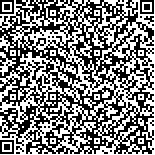Archive > Volume 43 Issue 5 > 2017,43(5):552-559. DOI:10.7519/j.issn.1000-0526.2017.05.004 Prev Next
Performance Verification and Ensemble Experiments of Hydrometeors Forecasting by Different Microphysical Schemes in WRF Model
- Article
- Figures
- Metrics
- Preview PDF
- Reference
- Related
- Cited by
- Materials
Abstract:
The new improved retrieval data of cloud water, rain water and ice water detected by the TRMM (Tropical Rainfall Measuring) satellite TMI (TRMM Microwave Imager) are applied to quantitatively verify the performance of six microphysical schemes of WRF (Weather Research and Forecasting) model for hydrometeors over Jiangsu offshore and surrounding areas. The statistical verification results of 19 cases show that the six schemes can predict the magnitude and approximate range of the hydrometeors. For cloud water content forecasting there is a large deviation in NSSL 2mom scheme but little deviation in other schemes. CAM5.1 scheme has a better performance in forecasting rain water when the content is larger, but worse performance when the content is small. Lin scheme is better in forecasting ice water than other schemes compared to the observation. On the basis of quantitative verification, the ensemble forecasting experiments are carried out by the two methods of ensemble mean (EMN) and the biasremoved ensemble mean (BREM). The results show that both methods can reduce the error of prediction, and the BREM is better than the EMN.
Keywords:
Project Supported:
Clc Number:


Mobile website









